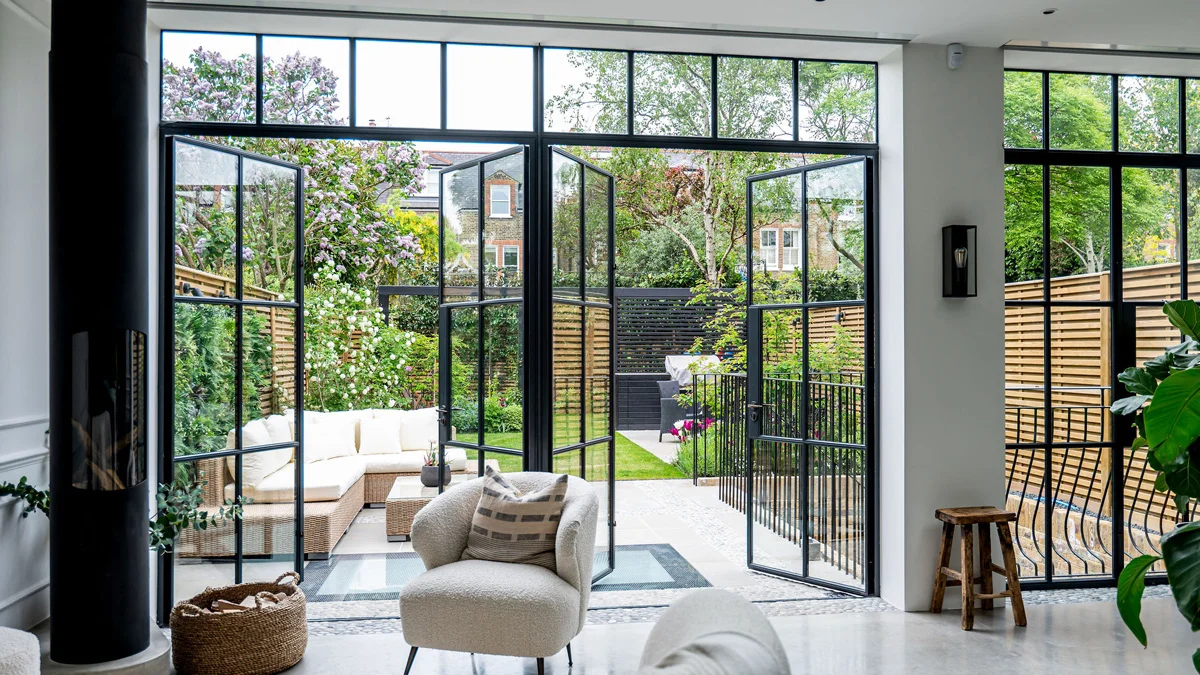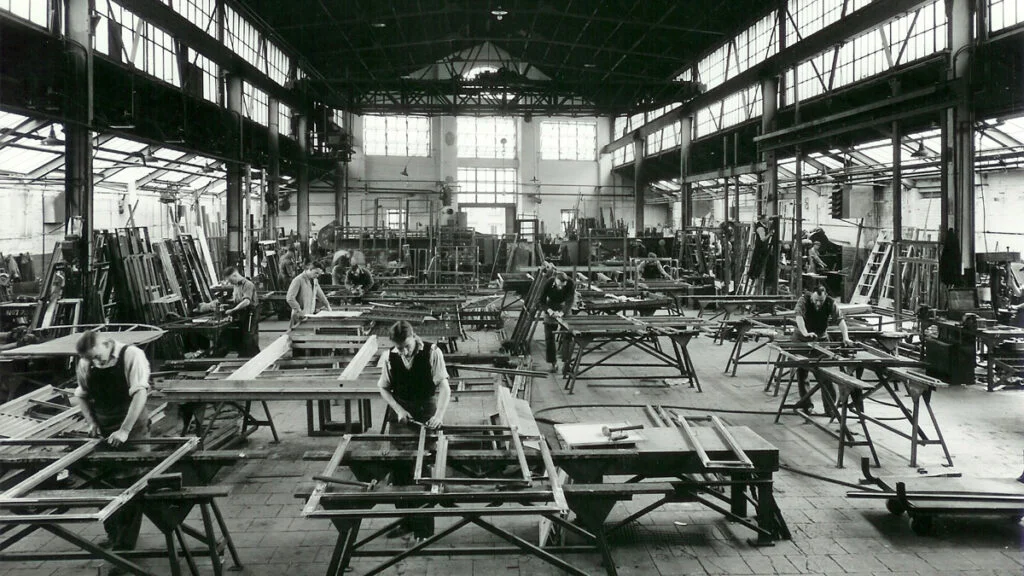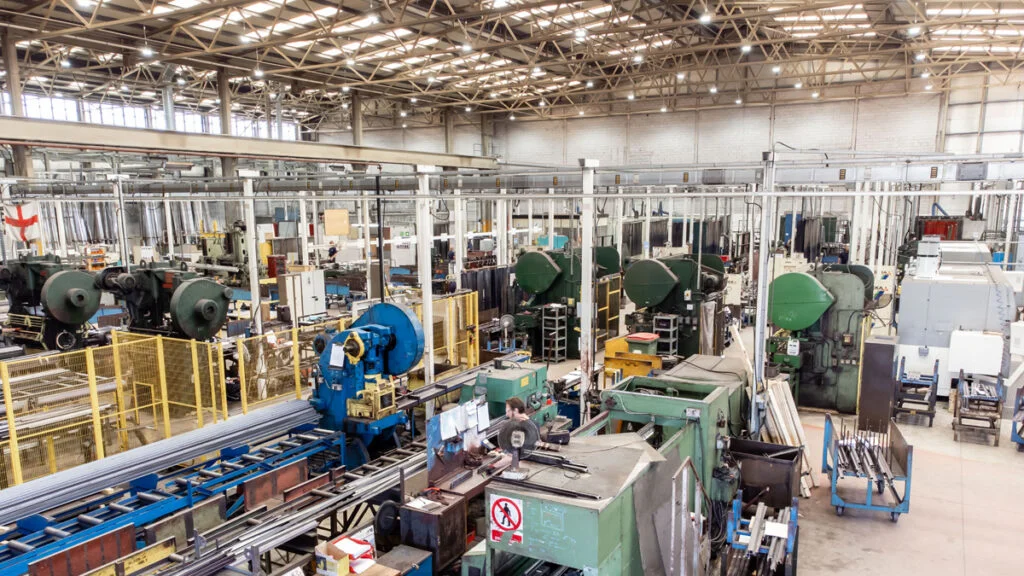
There are not many businesses whose products have become a byword for a whole category. Google has managed it, as has Hoover, Sellotape and Velcro. But there’s one you might not even realise was a company to start with. That is Crittall, which while it is a style of black steel-framed windows is also the name of the firm that originally made them.
The company that would eventually become Crittall has its origins as an ironmonger but began manufacturing windows in 1884 under the supervision of Francis Henry Crittall. Over the years it has expanded into other areas, including producing munitions during the First and Second World Wars, manufacturing curtain walling and developing the pressure chamber weather performance standards still used today. But it still manufactures windows, making it the world's oldest and largest steel window manufacturing company.

Crittall’s managing director, Russell Ager, joined the business when he was 18 doing material testing in a lab. His father was a lifer with the company, making handles and window fittings in his role as a design draughtsman. Ager worked his way up the company before leaving for a three-year stint at the Danish manufacturer Velfac, the sister company of roof window brand Velux.
“I decided it would be a good idea to try my luck elsewhere,” he says. “That was a great experience and I learned a lot working with a European business. But the draw of coming back to Crittall… it's like going back to your family.” He rejoined the company in 2006 as a board member before rising to the chief executive role in January 2019.
The company he took over was in a torrid state. It posted a £1.4m loss for the 2019/20 financial year and some of the machinery it was using dated back to the 1920s. While these machines still worked, they had one key problem: they were temperamental.
“A lot of the old machines could only be run by, say, Fred,” Ager says, “because Fred knew how you tweak it. Whereas with modern CNC machinery, you don't need that.” CNC stands for Computer Numerical Control. These machines are driven by software in which windows and doors are configured for manufacture, such as bar lengths.
The other big thing that needed to be urgently addressed was culture. Ager admits the company was “very siloed”, making it difficult to get people to work together to solve problems or better service customers.
“There was a lot of backbiting and antagonism between departments. There wasn't any collaborative working. Changing that took time,” he says.

The clarity of thought needed to muster a turnaround was in Ager’s grasp because he knew the business inside and out. But he admits there were periods when he didn’t know if his plans would work.
Over time, however, people came around to the changes he was trying to make, even the 'Freds’ of the business, who proved more adaptable than he had expected. “They could see how things were changing if they did things in a certain way, it had a better outcome. It was a gradual drip-feeding of improvement that people could feel. As they felt it, they adopted it.”
Key to that has been bringing people on the journey. He recalls a presentation he did to the company not long after he’d taken the top job. In it, he detailed exactly what the vision was, what he planned to change and why. “That was one of the things that got them on board,” he recalls. “They could see where we were going and, more importantly, their part in it.”
One of the primary changes was implementing lean manufacturing into Crittall’s factory. To do that, the company enlisted the help of the Manufacturing Technology Centre (MTC) to provide a fresh set of eyes. The research firm examined Crittall’s production processes and workflows to identify waste and improve efficiency and productivity. Most importantly, it provided a framework for adopting lean manufacturing techniques across the entire production process from raw material to finished goods.

MTC also got buy-in from Crittall staff. “The team are so proud of what they've achieved,” Ager says. “It was small things like cleaning an area, so it went from dark and dingy to bright and welcoming. I'd go to the factory and one of our team members would say, ‘Come over here and look what I’ve done’. Then it started to spread so we had people in other zones saying, ‘When can we be part of this process?’.”
Unknowingly, that set the company up for what proved to be a challenging few years. The pandemic, hyperinflation and the war in Ukraine saw the price of steel leap 50 per cent and glass prices rise by more than 200 per cent. This was made even more difficult because Crittall operates under fixed-price contracts, so it was difficult to maintain profit margins and keep operating.
“It was immensely challenging because a large part of our business is contracting,” he says. “A lot of main contractors have gone bust simply because of increased costs. However, our supplier relationships meant we got a lot of relief. And because of all the work we'd done, we created headroom within our processes.
“The lesson is don't wait for difficult things to happen. Be sure you're as lean and as efficient as you can be because you never know what's going to happen.”

There’s another major challenge on the horizon for the business. Home energy efficiency is squarely in the government’s plan to hit net zero. The changing regulations mean Crittall must push the boundary of what is possible for a steel window.
One of the greatest assets of a Crittall window is its aesthetics – it is slim and nice to look at. But plastic or aluminium windows have incorporated thermal brakes to make them more thermally efficient.
“Our challenge was not to alienate customers and maintain the look,” says Ager. “While we do a thermally broken steel window, we managed to innovate and get the same performance out of the standard product. That was all possible because we had the investment in the technology and computer systems, which allowed us to do something a lot of other firms can't.”
Ager is proud of Crittall’s ability to push the boundaries of what is possible in the fenestration industry. He’s guided the company from a £1.4m loss in 2019 to a £623,000 profit in 2023/24. Persistent improvement and unwavering employee buy-in have set the company up to continue to build on its legacy.
Related and recommended
The hotel executive believes the hospitality industry needs to be proactive in hiring to reflect society
The legendary ad exec believes leaders should collaborate with the technology, rather than use it as a tool
Entering new markets drives growth but can trip up the unwary. Here’s everything you need to know before you start
Richard Harpin, the founder of HomeServe and Growth Partner and owner of Business Leader, answers your burning business questions
